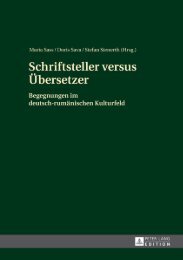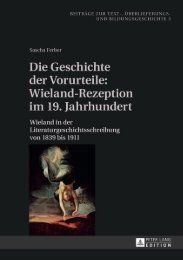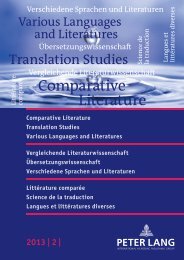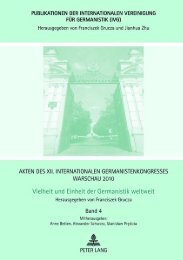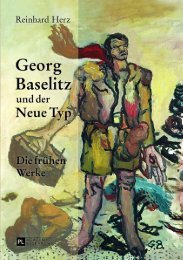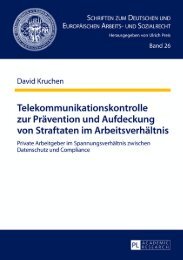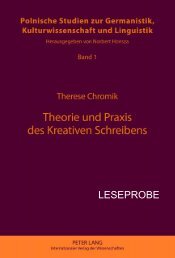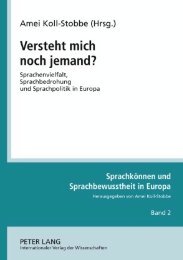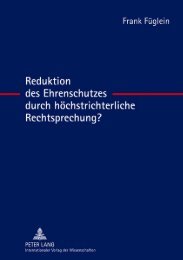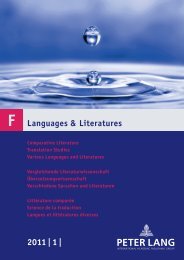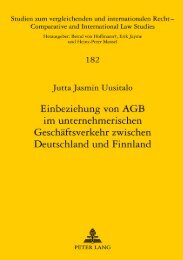Extract (PDF) - Peter Lang
Extract (PDF) - Peter Lang
Extract (PDF) - Peter Lang
You also want an ePaper? Increase the reach of your titles
YUMPU automatically turns print PDFs into web optimized ePapers that Google loves.
16 Fernanda Peñaloza<br />
The conflicts that arose from the colonising projects of Argentina and<br />
Chile over the Patagonian region demonstrate that although the ruling<br />
classes endorsed the European ideas of modernity and encouraged European<br />
investment and immigration, thereby affirming white supremacy,<br />
this process was not a simple practice of replication. The elite Creoles, in<br />
their struggle to build up a nation, envisaged a modernisation project that<br />
strategically combined local versions of European elements with a search<br />
for identity highly attached to a sense of authenticity that the landscape<br />
seemed to convey. Far from benefiting from the white Creole’s selective use<br />
of European creeds, the natives of Patagonia who survived wars of extermination,<br />
appropriation of their natural resources, expulsion from their<br />
territories, contagious diseases and forced labour had to develop complex<br />
strategies of resistance in order to reconstruct a collective historical memory,<br />
which was almost wiped out.<br />
Despite a long history of displacement, the indigenous peoples of<br />
Patagonia have maintained a dialogue with a fluid cultural network that<br />
has often negated their legitimate presence. One cannot miss the continuity<br />
of certain forms of historical amnesia, but neither can one ignore that the<br />
indigenous voice is dynamically circulating in the culture of the Patagonian<br />
region. One example of this lending and borrowing of meanings is a poem<br />
that won the highest prize in the Eisteddfod of the Chubut Valley in 1990.23<br />
From its title we learn that the poet pays tribute to the kultrún, a drum<br />
used in the ngillatún, an ancestral Mapuche ceremony. In the poem the<br />
kultrún is being displayed in a museum cabinet: “It is as if from the earth<br />
a piece of heart had been pulled up and still beating it had been put […]<br />
in the cabinet of things that had died.” In spite of apparently being lifeless<br />
According to Stepan, compared with other countries in the region, Argentina was<br />
“the most conventionally racist in its eugenic ideology. In 1918 the country considered<br />
itself to be largely white and immigrant; its black population, once quite sizeable,<br />
had by the 1880’s been reduced to less than two percent of the national population<br />
[…] Indeed, Argentina seemed to many Latin Americans to be the only country<br />
that had realised its elites’ old dream of racial transformation by whitening and<br />
Europeanisation” (139).<br />
23 By local poet Juan Carlos Coralini.



